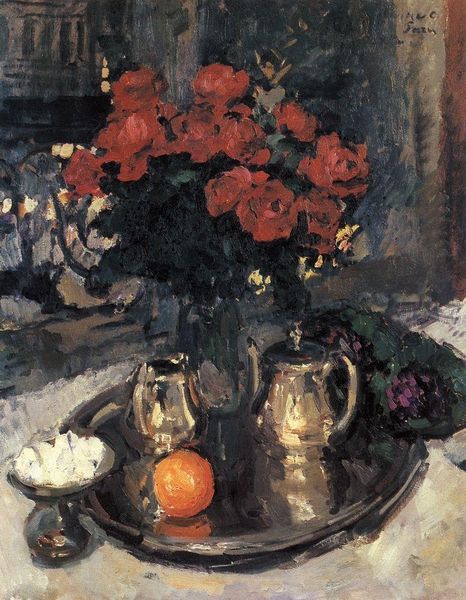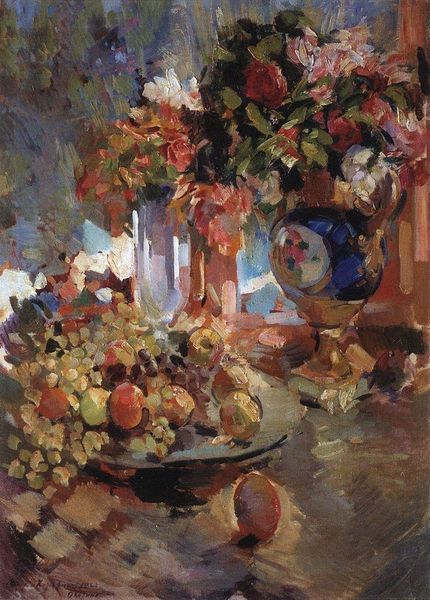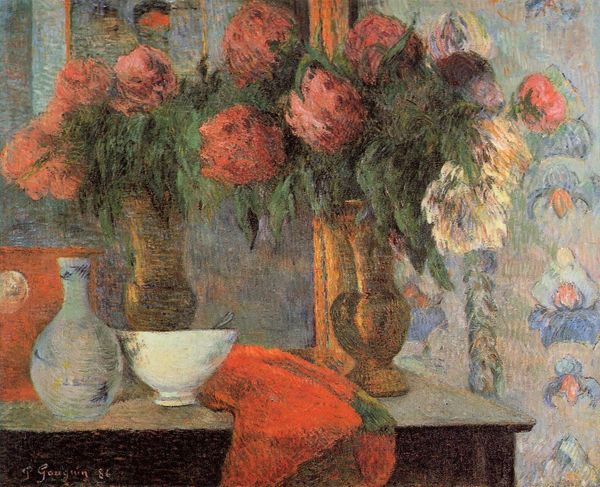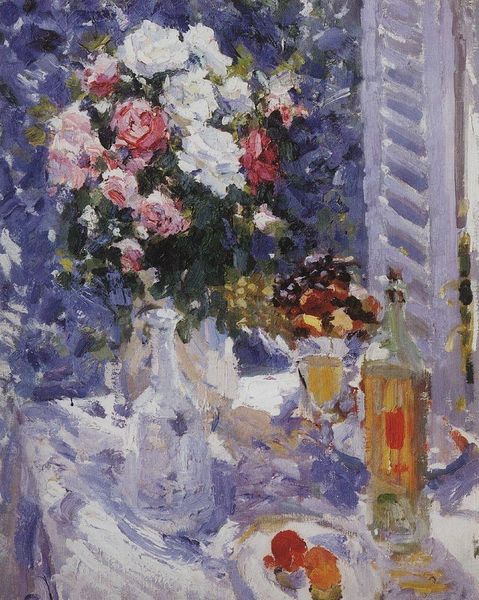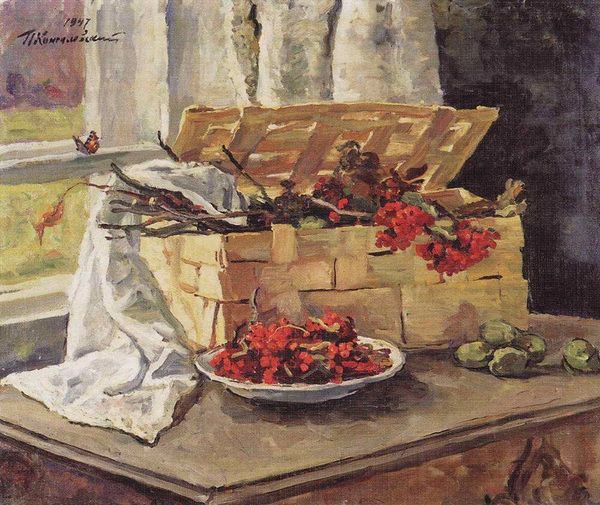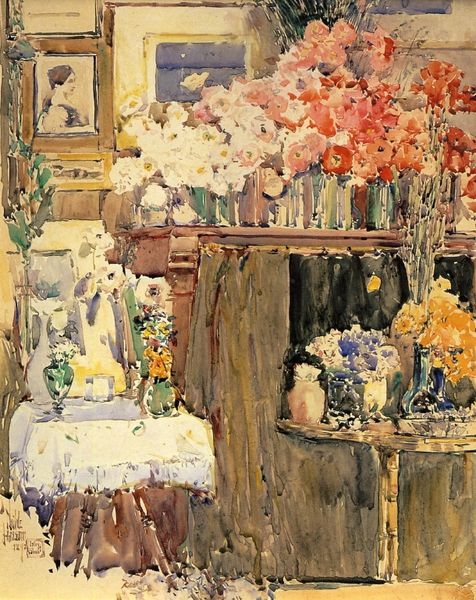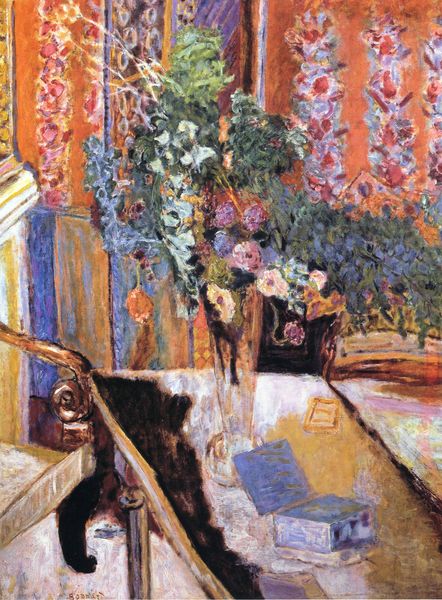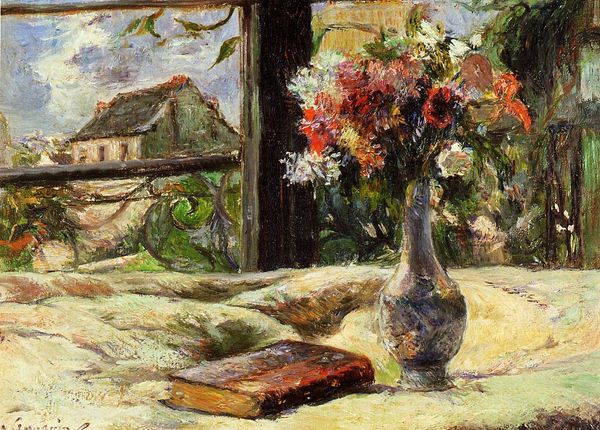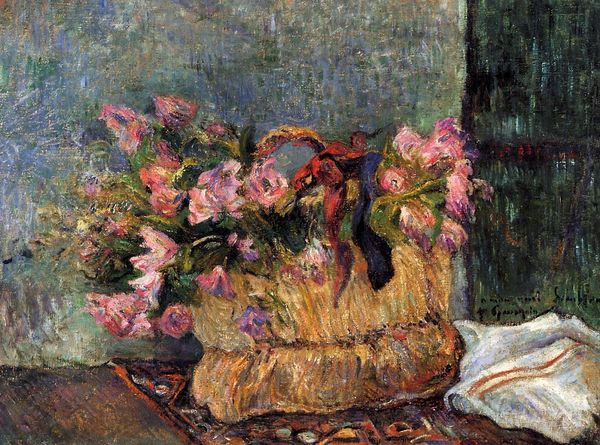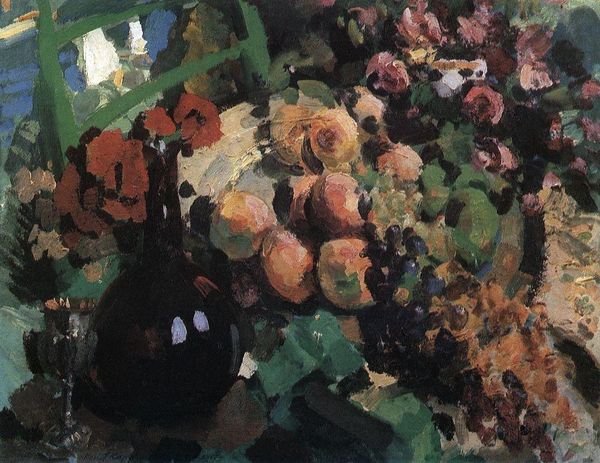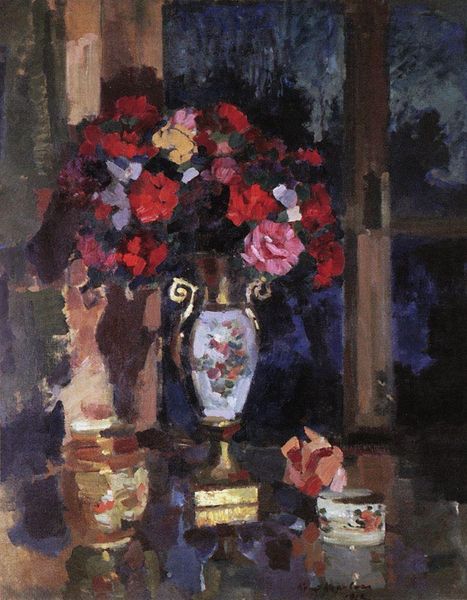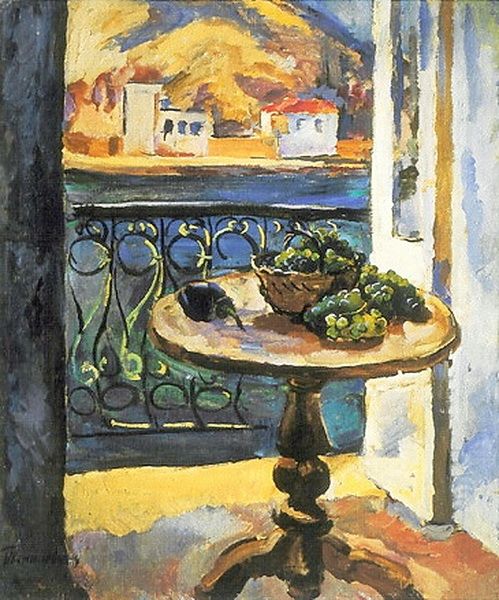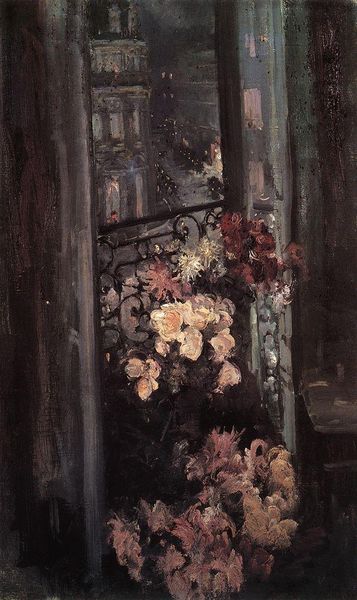
Copyright: Public domain
Editor: Here we have Konstantin Korovin’s "Still Life," painted in 1912. The oil on canvas depicts fruit, flowers, and a cityscape beyond a window. There's almost a tension between the domestic objects and the outside world, captured in these loosely defined brushstrokes. What catches your eye in terms of pure form? Curator: Indeed. Let's examine how Korovin manipulates visual space. Note the structural importance of the window frame, creating a clear division between the interior still life and the external cityscape. This division introduces a binary relationship within the picture plane. How does this contrast affect your reading of the painting? Editor: It makes me think about inside versus outside, of course. It seems to imply a psychological boundary. But structurally, how does the handling of light contribute to this division? Curator: The contrast in lighting directs our gaze and highlights formal qualities. Inside, the light reflects off the metal pitcher, emphasizing its shape and texture. Outside, the cityscape is defined by darker tones and the geometry of the buildings, less about material, and more about planar recession. Editor: So, you see the structure as deliberately contrasting material presence with planar geometry and recession. I hadn't thought of the spatial qualities in those specific terms before, more generally speaking. Thank you for clarifying! Curator: Exactly. Paying close attention to the composition helps to see how a painter such as Korovin employs the tensions between object and plane, light and shadow, and form and colour to elicit complex meanings. These careful details add dimension to what might otherwise appear a simple subject.
Comments
No comments
Be the first to comment and join the conversation on the ultimate creative platform.
